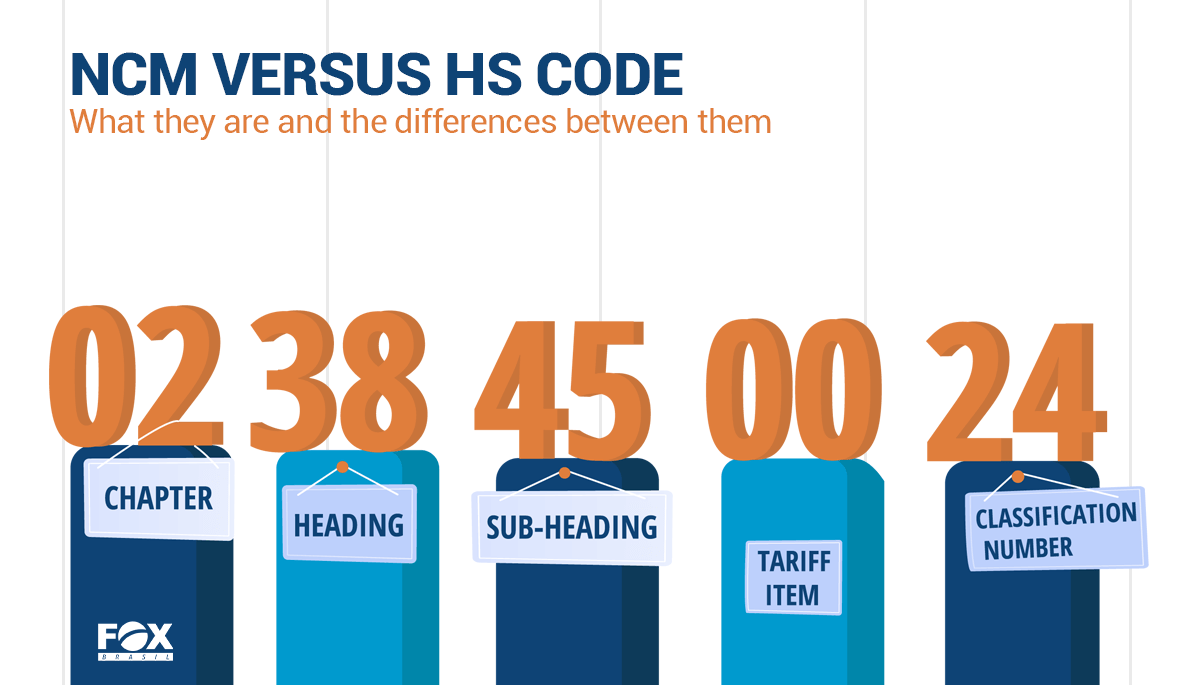NCM vs HS Code: What they are and the differences between them

Understand Logistics & Freight
In the realm of international trade logistics, a critical aspect that demands attention from freight forwarders is the classification of cargo, particularly when seeking quotations. Beyond the destination details, understanding the precise nature of the cargo becomes imperative for seamless customs clearance. While conventional methods such as photos, videos, or brief descriptions suffice for communication, they fall short in the intricate landscape of customs procedures, necessitating authorization for the export or import of goods.
Verbal or written descriptions risk misconceptions and confusion, compounded by potential language barriers during translation. Visual aids, such as pictures and videos, prove inadequate in conveying accurate dimensions. To address these challenges, the trading business relies on indispensable tools—namely, the HS Code (Harmonized System) and the NCM (Nomenclatura Comum do Mercosul).
Harmonized System (HS Code)
The Harmonized System, commonly known as the HS Code, comprises a six-digit classification used to categorize products for import or export. This standardized coding system serves as a universally recognized means of identifying product nature and is integral to global trade. Beyond classification, the HS Code plays a pivotal role in determining import tariffs, facilitating essential shipping documentation (e.g., commercial invoices, certificates of origin), and providing valuable research data for market analysis.
The HS Code is organized into a comprehensive database accessible online. This database encompasses twenty-one sections, each with chapters offering detailed descriptions aiding in code selection for freight classification. For example, “Section One – Live animals, animal products” includes nine chapters, with Chapter one dedicated exclusively to live animals, further subdivided based on species, weight, and export rationale. In cases of uncertainty, professional assistance from a freight forwarder can mitigate potential errors.
World Customs Organization (WCO) guidelines permit countries worldwide to append additional digits to the initial six of the HS Code, adapting to local import/export regulations. The United States, for example, employs a ten-digit code called Schedule B number, while Brazil utilizes the NCM.
Nomenclatura Comum do Mercosul (NCM)
The NCM is an eight-digit identification code exclusive to countries under the Mercosur agreement, distinguishing it from the global applicability of the HS Code. In Brazil, adherence to the NCM is mandatory for importing products. Comprising the initial six digits from the HS Code, the NCM incorporates an additional two digits, offering a more nuanced classification.
Understanding the structure of these codes involves breaking down the numerical components:
- The first two digits denote the chapter within the Harmonized System Database.
- The subsequent two digits relate to the position within the chapter, outlining product characteristics.
- The fifth and sixth digits represent the subcategory.
- Uniquely in the NCM, the last two digits provide specific characteristics and a detailed goods description aligned with the NCM table.
By unraveling the intricacies of the HS Code and NCM, stakeholders can navigate the complexities of international trade with precision and compliance.